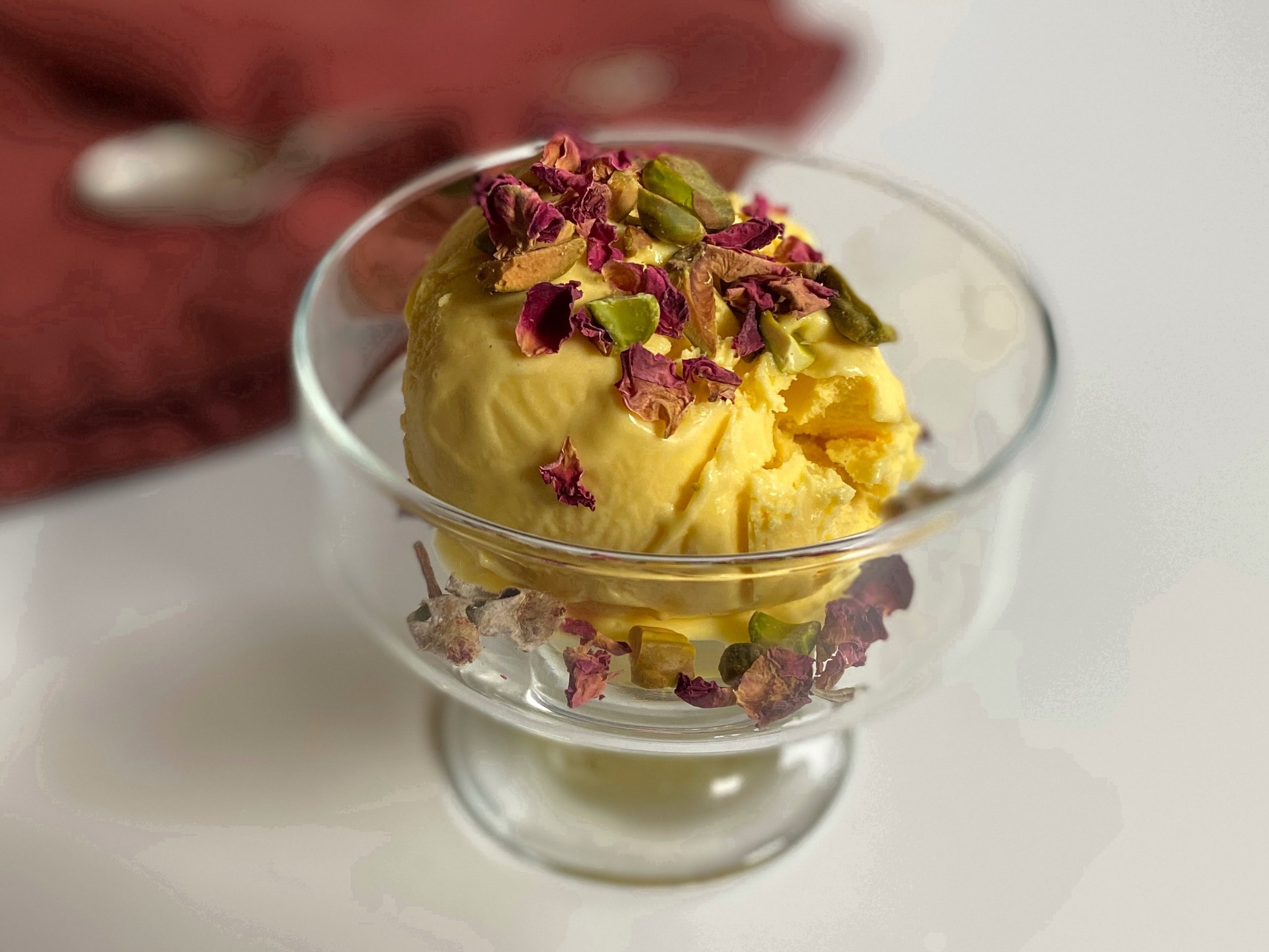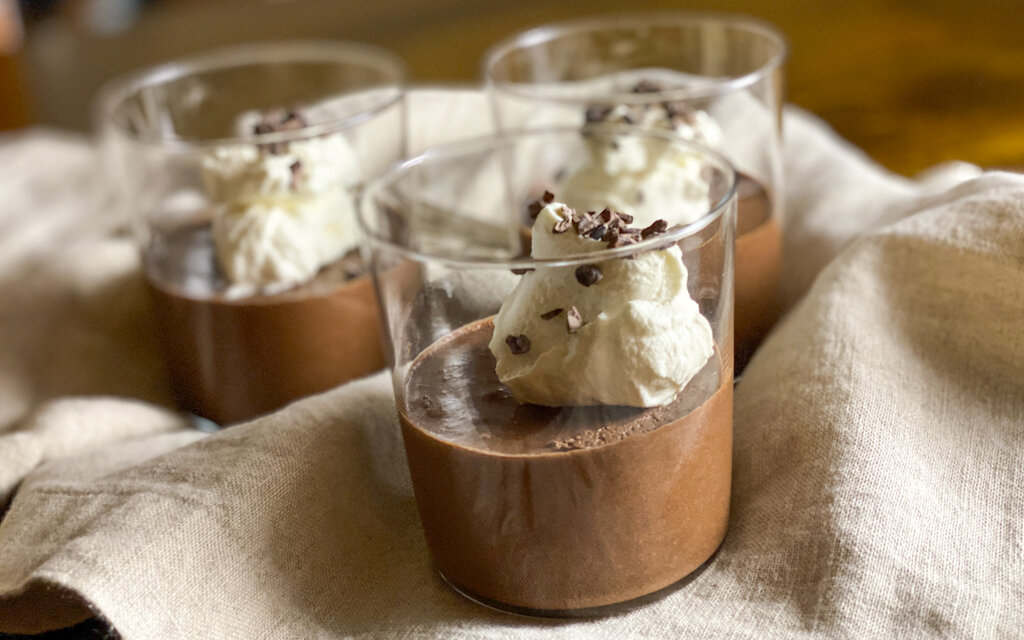By Leslie Brenner
Last time I made bastani — the saffron and rosewater ice cream that’s one of Iran’s most famous and beloved desserts — my friend Greg closed his eyes, seeming to drift away to a faraway land, and said: “This may be the best ice cream I’ve ever had.”
After having tweaked my recipe a couple times, I knew I’d gotten it right.
There are several different ways to approach bastani. Traditionally, it includes salep (also transliterated as sahlab), a flour made from orchid tubers, which gives it a distinctive sticky-chewy texture. Sometimes bastani also includes nuggets of frozen clotted cream, or chopped pistachios folded in.
Egg yolks are another variable: Some versions use a lot of them, maybe six yolks for a quart of ice cream; others do without eggs entirely.
Whatever direction you take, chances are excellent that your bastani will be dreamy. How could it not? Rosewater and saffron are such an enchanting combination.
To make a custardy bastani, which is probably most common, combine and heat cream, milk, sugar and saffron, whisk the hot mixture into whisked egg yolks, slowly cook, stirring, until it coats a spoon, strain and stir in rosewater and vanilla. Chill it down and freeze in your ice cream maker.
I like bastani rich, but not heart-stoppingly so: Three yolks tastes just right.
And I keep it simpler — going for a smooth and velvety vibe; mine skips the salep and clotted cream. Chopped pistachios go on top as a final flourish, if I use them, along with dried rose petals. If you want to lean more into the pistachio vibe, go ahead and stir some in before you freeze it. Or skip the nuts, if you’re so inclined — it’s also delightful without them.
Want to try something really fun? Consider making the ice cream sandwiches known as bastani-e nooni or bastani-e nuni — a scoop of bastani between two round ice-cream wafers. Or you could plop a scoop into a waffle cone, for a pointy spin on that traditional treat.
If your goal, on the other hand, is to impress Greg, just serve a scoop or two in small dishes, and scatter those dried rose petals and crushed pistachios on top.
READ: Cookbooks We Love: David Lebovitz’s ‘The Perfect Scoop’ is the only ice cream book you’ll ever need
READ: For a luscious treat this weekend, make Gianduja-Stracciatella (hazelnut-chocolate) Gelato
If you like this recipe, try these:
RECIPE: ‘The Perfect Scoop’ Matcha Ice Cream
RECIPE: Syrian-Lebanese Rice Pudding
RECIPE: Sweet Pineapple Tamales






